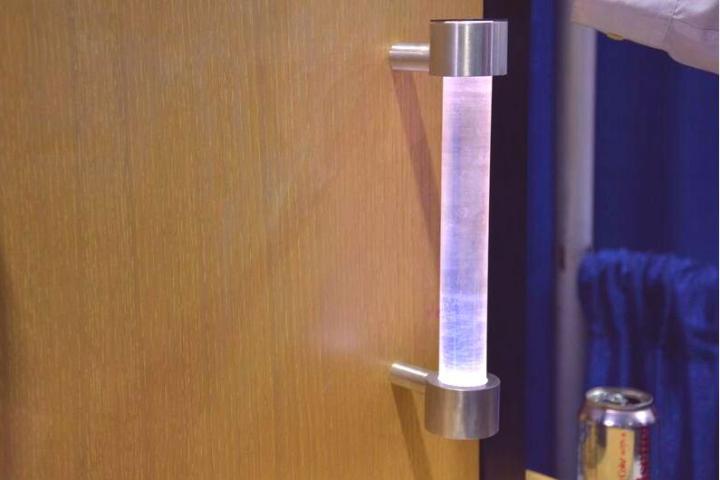
Nobody thinks to sanitize door handles, but luckily for us, a pair of enterprising high school students from Hong Kong have developed a brilliant new handle system that might one day keep germs at bay — without any harsh chemicals or regular cleaning.
Here’s how it works. The handle (which creators Simon Wong and Michael Li recently presented at the Intel International Science and Engineering Fair in Pittsburgh) uses two different germ-killing techniques. For starters, the visible surfaces of the handle are made from titanium oxide — a naturally occurring metal oxide that’s known for its anti-bacterial qualities.
This was a pretty smart design choice, but Wong and Li didn’t stop there. Titanium dioxide doesn’t always kill 100 percent of surface bacteria, so to boost the handle’s microbe-murdering abilities, the duo outfitted it with a special UV-emitting glass cylinder. Every time it’s used to open the door to which it’s proudly attached, the handle puts out a short burst of low-wavelenth ultraviolet light — effectively scrambling the DNA of any germs that might be hanging out on the surface, and rendering them incapable of breeding/multiplying.
And it gets even better. As if titanium dioxide brackets and a UV-emitting glass handle weren’t genius enough, Wong and Li also designed the system to be completely self-powered. The boys attached a gearbox to the door that converts the motion from opening and closing it into electricity. This creates enough energy to power the handle’s internal LEDs, so it doesn’t need an outside energy source to work.
Pretty brilliant, right? We need to get this invention into hospitals ASAP.



